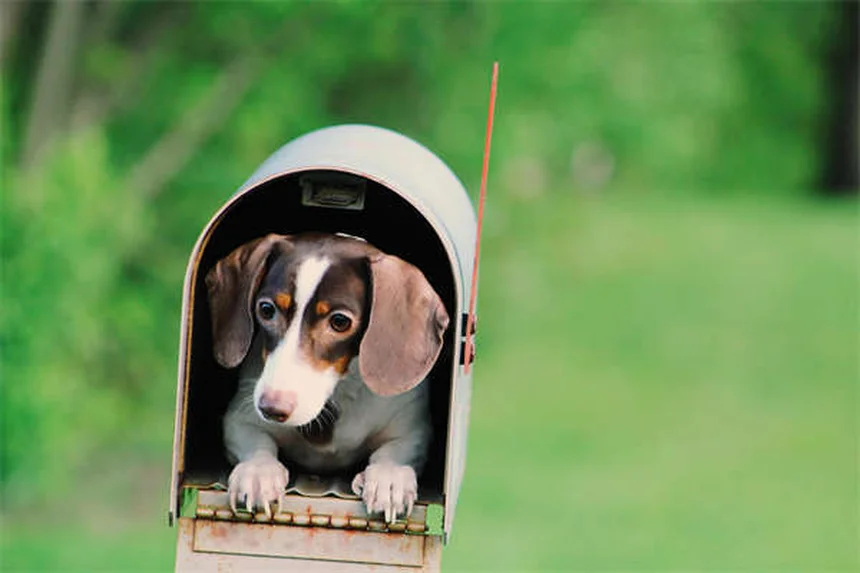How many hamster species exist in the wild versus as pets? The answer might surprise you: while there are 24 recognized wild hamster species, only 5 have become our beloved pet companions. I've been fascinated by these little furballs for years, and let me tell you - their story is wilder than you'd expect! From near-extinction survival tales to their incredible natural adaptations, hamsters are way more than just cute cage dwellers. In this guide, we'll explore the fascinating differences between wild and domestic hamsters, why some species are disappearing, and how you can give your pet hamster a taste of its wild roots.
E.g. :Guinea Pig Dystocia: Signs, Causes & Prevention Tips
- 1、The Fascinating World of Hamsters
- 2、The Syrian Hamster's Incredible Survival Story
- 3、The European Hamster Crisis
- 4、Hamster Habitats: Nature's Perfect Design
- 5、Wild vs. Domestic: Spot the Differences
- 6、Hamster Superpowers
- 7、How You Can Help Hamsters
- 8、Hamster Communication: More Than Just Squeaks
- 9、Hamster Diets: From Desert to Dinner Bowl
- 10、Hamster Reproduction: Nature's Speed Dating
- 11、Hamster Hibernation: The Ultimate Power Nap
- 12、Hamster Intelligence: Smarter Than They Look
- 13、Hamster Conservation: Every Little Bit Helps
- 14、FAQs
The Fascinating World of Hamsters
Meet the Five Pet-Friendly Species
Did you know there are 24 different hamster species roaming our planet? But here's the kicker - only 5 of these adorable furballs make it to our homes as pets. That's like having a whole candy store but only choosing five favorite flavors!
Let me introduce you to the pet hamster all-stars: the Syrian (or golden hamster), the dwarf Campbell Russian, the winter white dwarf, the Roborovski dwarf, and the Chinese hamster. Each has its own unique personality - kind of like how you and your siblings might look similar but have totally different tastes in music.
Wild Hamsters: Nature's Original Version
Wild hamsters are like the extreme sports athletes of the rodent world. They've adapted to survive in some of Earth's harshest environments. While your pet hamster enjoys climate-controlled comfort, its wild cousins face scorching deserts and freezing steppes daily.
Fun fact: Wild hamsters can run up to 5 miles in a single night searching for food! That's like you running from New York's Central Park to Harlem and back - just for a midnight snack.
The Syrian Hamster's Incredible Survival Story
 Photos provided by pixabay
Photos provided by pixabay
From Near Extinction to Pet Stores Everywhere
Picture this: It's 1930 in Syria, and archaeologist Israel Aharoni stumbles upon a golden treasure - but not the shiny kind. He discovers a nest of wild Syrian hamsters, a species already vanishing faster than ice cream on a hot day.
These little survivors became the ancestors of nearly all pet Syrian hamsters today. Talk about a family reunion! Their descendants now live in homes worldwide, from Tokyo apartments to Texas ranch houses.
Why Wild Syrian Hamsters Are Still at Risk
Here's the sad truth: While pet Syrians thrive, their wild cousins might disappear like yesterday's tweets. Only three scientific teams have spotted them in nature since 1999. That's rarer than finding a four-leaf clover!
The main threats? Farmers plowing their homes into fields and builders turning burrows into parking lots. It's like someone bulldozing your house to plant corn - you'd be pretty upset too!
The European Hamster Crisis
Europe's Disappearing Giant
European hamsters are the bodybuilders of the hamster world - big, tough, and not afraid to throw their weight around. But here's the shocking part: they're vanishing faster than any other European mammal.
| Year | Population Decline | Habitat Loss |
|---|---|---|
| 1950 | 10% | 20% |
| 2000 | 60% | 65% |
| 2023 | 75% | 80% |
 Photos provided by pixabay
Photos provided by pixabay
From Near Extinction to Pet Stores Everywhere
Why are these tough guys struggling? Scientists discovered something wild - cornfields might be causing hamster cannibalism! Wait, what?
Here's the deal: Corn binds to vitamin B3, creating deficiencies that make mama hamsters eat their babies. It's like if eating only pizza made you do crazy things - except way more tragic.
Hamster Habitats: Nature's Perfect Design
Desert Survival Specialists
Wild hamsters are the ultimate survival experts. They thrive in places that would make most creatures wave a white flag: scorching deserts, freezing steppes, and rocky wastelands.
Their secret? Built-in temperature control! Light backs reflect sunlight, while pale bellies bounce back ground heat. It's like wearing a reversible jacket that automatically adjusts to the weather.
Burrow Architects Extraordinaire
Ever wonder why your pet hamster loves tunneling through bedding? It's in their DNA! Wild hamsters dig elaborate underground condos with separate rooms for sleeping, storing food, and even going potty.
Some cheeky species like the Djungarian hamster skip the hard work and just move into abandoned mouse homes. Talk about rodent real estate hacking!
Wild vs. Domestic: Spot the Differences
 Photos provided by pixabay
Photos provided by pixabay
From Near Extinction to Pet Stores Everywhere
Think all hamsters are cute and cuddly? Think again! Wild hamsters are like the action movie versions of their domestic cousins - bigger, tougher, and way more likely to stand their ground.
Did you know a wild European hamster can grow as big as a guinea pig? That's like your Chihuahua suddenly becoming German Shepherd-sized!
Color and Camouflage
Nature gave wild hamsters the perfect camouflage outfits. Their earthy brown and gray fur blends into deserts and fields, while pet hamsters come in every color from panda-white to midnight-black.
Why the difference? Wild hamsters need to hide from hawks and foxes, while pet hamsters just need to look adorable for your Instagram posts!
Hamster Superpowers
Cheek Pouches: Nature's Shopping Bags
Ever seen a hamster stuff its face? Those expandable cheek pouches can hold 20% of their body weight in food! That's like you carrying 30 pounds of groceries in your mouth - now that's a party trick!
Wild hamsters use this superpower to stockpile food for winter. Your pet hamster? It probably just hoards treats under its bedding like a tiny, furry dragon guarding treasure.
Night Vision (Well, Sort Of)
Here's a question: Why does your hamster wheel sound like a freight train at 2 AM? Because hamsters are nocturnal ninjas with special night-adapted senses!
While their eyesight isn't great, they navigate using scent trails from special glands. It's like leaving breadcrumbs - except these breadcrumbs are smelly and invisible to humans!
How You Can Help Hamsters
Support Conservation Efforts
Want to help wild hamsters without adopting one? Support organizations working to protect their habitats. Even small donations can make a big difference for these little guys!
Be a Responsible Pet Owner
If you have a pet hamster, give it the best wild-like experience possible: plenty of bedding for burrowing, hiding spots, and opportunities to forage for food. Your hamster will thank you with endless entertainment!
Remember, every time you watch your pet hamster stuff its cheeks or build a nest, you're seeing millions of years of wild survival instincts in action. Pretty cool, right?
Hamster Communication: More Than Just Squeaks
The Secret Language of Scent
You know how your hamster keeps rubbing against everything in its cage? That's not just random behavior - it's leaving scent messages like tiny furry post-it notes! Wild hamsters use scent glands on their hips to mark territory, kind of like how you might put your name on your lunchbox.
Here's something wild - hamsters can actually tell the difference between male and female scents from miles away. Imagine being able to smell whether your neighbor is a boy or girl without ever seeing them!
Body Language Decoder
Ever seen your hamster suddenly freeze like a statue? That's not them being cute - it's a survival tactic straight from the wild! In nature, freezing helps them avoid predators. Your pet might do this when startled by sudden noises, proving those wild instincts never really go away.
When hamsters stand on their hind legs with ears forward, they're not just showing off - they're scanning for danger. It's like when you stand on your tiptoes to see over a crowd at a concert!
Hamster Diets: From Desert to Dinner Bowl
Wild Foraging vs. Pet Store Meals
Think your hamster's food bowl is boring? In the wild, hamsters are master foragers eating over 200 different foods! From seeds and grains to the occasional insect, their diet is more varied than your favorite buffet restaurant.
Here's a fun comparison of what wild vs. pet hamsters eat:
| Food Type | Wild Hamsters | Pet Hamsters |
|---|---|---|
| Seeds/Grains | 60% of diet | 70% of diet |
| Vegetables | 25% (seasonal) | 20% (daily) |
| Protein | 15% (insects) | 10% (pellets) |
The Water Conservation Miracle
Did you know wild hamsters can survive on just one teaspoon of water per day? Their kidneys are so efficient they extract every last drop, making them the camel equivalents of the rodent world. Your pet hamster drinks more simply because it can - lucky little guy!
This raises an interesting question: Why don't pet hamsters conserve water like wild ones? The answer's simple - when food and water are always available, those survival adaptations aren't necessary. It's like how you might pack light for a camping trip but bring everything when moving to a new apartment!
Hamster Reproduction: Nature's Speed Dating
The Fastest Courtship in Nature
Hamster romance happens faster than you can say "love at first sight." Wild hamsters complete their entire courtship in about 30 minutes - that's quicker than most people take to get ready for a date! The female is only receptive for a few hours every four days, so males can't afford to waste time.
After mating, the male disappears faster than pizza at a party. In hamster world, dads don't stick around to help raise the kids - survival is hard enough without playing house!
Baby Boom Potential
Here's a mind-blowing fact: A single pair of hamsters could theoretically produce over 20,000 descendants in one year! That's why wild populations can bounce back quickly after disasters. Of course, nature has checks and balances - predators, food shortages, and weather keep numbers in check.
Your pet hamster has this same reproductive potential, which is why responsible owners keep males and females separate. Unless you want to open a hamster daycare, that is!
Hamster Hibernation: The Ultimate Power Nap
Winter Survival Mode
Some wild hamster species have an amazing trick - they can lower their body temperature to just above freezing and slow their heartbeat to a few beats per minute. This isn't just sleeping - it's like putting their entire body on pause to survive food shortages!
Pet hamsters sometimes show traces of this behavior when rooms get too cold. You might find them sleeping deeply and feeling cool to the touch. A gentle warm-up usually does the trick - no bear-style hibernation needed in your cozy home!
The Energy Conservation Game
During hibernation, a hamster's metabolism drops by 95%. That means they're burning energy at just 5% of their normal rate! To prepare, wild hamsters double their weight in fall - something your pet might try to do too if you overfeed it.
This raises another question: Why don't all hamsters hibernate? The answer lies in their origins - species from consistently warm regions never needed this adaptation. It's like how you might own a winter coat but your cousin in Florida doesn't!
Hamster Intelligence: Smarter Than They Look
Maze Masters
Wild hamsters can remember complex routes through underground tunnels spanning several acres. That's like you navigating an entire neighborhood blindfolded! This spatial memory helps them find stored food months later - no GPS needed.
You can see this intelligence in your pet hamster too. Ever notice how they quickly learn where you keep the treats? They might not do calculus, but they're definitely plotting the fastest route to snack town!
Problem Solving Pros
Hamsters are surprisingly good at figuring out puzzles - in the wild, this means finding ways into sealed grain stores or protected bird nests. One study showed they can learn to press levers for food after just a few tries, proving they're more than just cute faces.
Try this with your pet: Hide treats inside toilet paper rolls or under cups and watch them engineer solutions. It's like watching a tiny, furry MacGyver in action!
Hamster Conservation: Every Little Bit Helps
Create Wildlife-Friendly Spaces
Even if you don't live near wild hamsters, making your yard more wildlife-friendly helps all small creatures. Leaving some areas wild, reducing pesticides, and planting native species creates mini-habitats. Think of it as building a hamster-friendly Airbnb for local wildlife!
If you're really ambitious, you could even build an insect hotel - this provides food for birds and small mammals while helping pollinators. It's a win-win for everyone!
Spread the Word
Most people don't realize how fascinating wild hamsters are - they just see the cute pets. Share what you've learned with friends! The more people appreciate these creatures, the more support conservation efforts will get.
Remember, every species plays a role in its ecosystem. Protecting hamsters means protecting entire food chains - from the plants they eat to the predators that rely on them. Not bad for an animal that fits in your hand!
E.g. :Hamster - Wikipedia
FAQs
Q: What are the 5 hamster species kept as pets?
A: The five hamster species commonly kept as pets are the Syrian (golden) hamster, Campbell's Russian dwarf hamster, Winter White Russian dwarf hamster, Roborovski dwarf hamster, and Chinese hamster. Each has unique characteristics - Syrians are the largest and most solitary, while Roborovskis are tiny speedsters perfect for observation. I always recommend Syrian hamsters for first-time owners because they're typically more docile and easier to handle. The dwarf species are adorable but require more specialized care due to their size and social needs.
Q: Why are wild Syrian hamsters so rare today?
A: Wild Syrian hamsters have become incredibly rare due to habitat loss from agriculture and urban development. It's heartbreaking to think that the ancestors of our pet hamsters are struggling in nature. Scientists estimate they've disappeared from about 75% of their original range in Syria and Turkey. The last confirmed sighting was in 1999! We can help by supporting conservation organizations working to protect remaining wild populations and their habitats.
Q: What makes European hamsters different from pet hamsters?
A: European hamsters are like the "big cousins" of pet hamsters - they can grow up to 12 inches long! Unlike our domesticated friends, they're fiercely territorial and have been known to attack much larger animals when threatened. Their population decline is particularly alarming, dropping by 75% in recent decades. Researchers believe changes in farming practices and vitamin deficiencies from monoculture crops play significant roles in their disappearance.
Q: How do wild hamsters survive in harsh environments?
A: Wild hamsters are survival experts with amazing adaptations! Their light-colored fur provides camouflage and temperature regulation, while their incredible burrowing skills create underground homes with separate "rooms." They can store up to 20% of their body weight in food in those famous cheek pouches - imagine carrying 30 pounds of groceries in your mouth! These traits help them thrive in deserts, steppes, and other challenging habitats across Europe and Asia.
Q: Can pet hamsters behave like their wild relatives?
A: Absolutely! Your pet hamster still has all its wild instincts - that's why they love to burrow, hoard food, and run miles every night. I always tell new owners to provide deep bedding for digging, hiding spots for security, and foraging opportunities to satisfy those natural behaviors. Watching a hamster create an elaborate nest or stuff its cheeks is like seeing millions of years of evolution in action. It's our responsibility to help them express these natural behaviors in captivity.


